YOUR CART
- No products in the cart.
Subtotal:
$0.00

It’s always frustrating when you work hard on one of your favorite recipes (like my yummy Air Fryer Breaded Cubed Steak, for instance), only to find out the meat has come out tough and chewy. It definitely takes away from the meal, which is why I always keep one of the best meat tenderizers in my kitchen.
Meat tenderizers help break down the bonds between the protein in tough cuts of meat, improving the texture and making it easier to cut and chew. Certain tenderizers can also help pound meat to a consistent thickness, ensuring an even cook.It’s a handy tool to keep in your collection, and I use mine all the time for recipes like my cozy Skillet French Onion Chicken.
If you’re looking for the best meat tenderizers, I’ve put together a list of my favorite options. I’ve personally used several of these tools, while others are highly rated among buyers and cooking pros. Keep reading to discover my top picks!
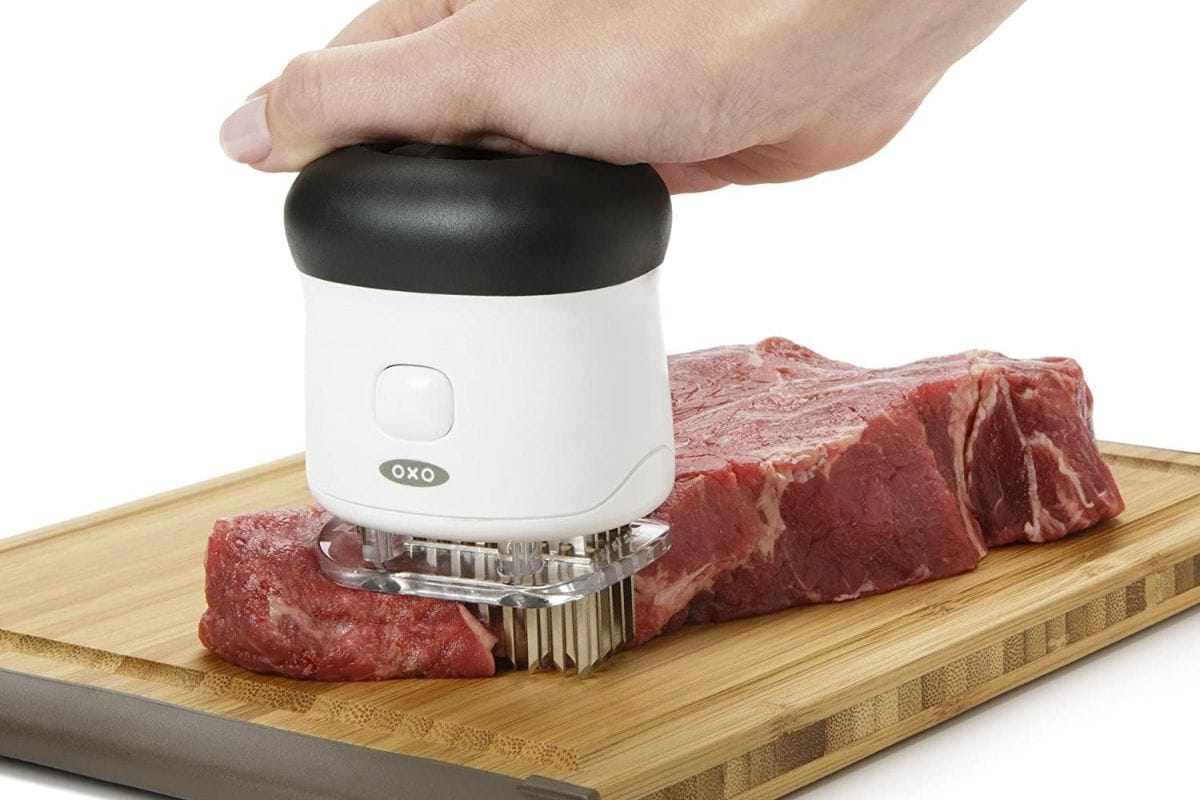
When I need to tenderize a tough steak or prep a piece of meat for marinade, I always reach for this bladed tenderizer from OXO Good Grips! It has 50 sharp, angled blades that easily cut through some of the toughest slices of protein—all you have to do is place it on top of the meat and push down. It has a non-slip grip for safety, and I love that it locks closed to make sure the blades don’t accidentally come out while it’s in storage.
Not only is it easy to use but this tenderizer is a breeze to clean, too.. You can pop it on the top rack of the dishwasher, which is ideal because of all those tricky spaces between the sharp blades (ouch!).
The only downside is that it’s not the best for pounding out thick cuts of meat — I’ve found that a mallet-style tenderizer is much more efficient for that task.
The Specs
The Pros
The Cons
What Others are Saying:
The OXO Good Grips Bladed Meat Tenderizer was named the best bladed meat tenderizer by Food Network.
Buy the OXO Good Grips Bladed Meat Tenderizer:
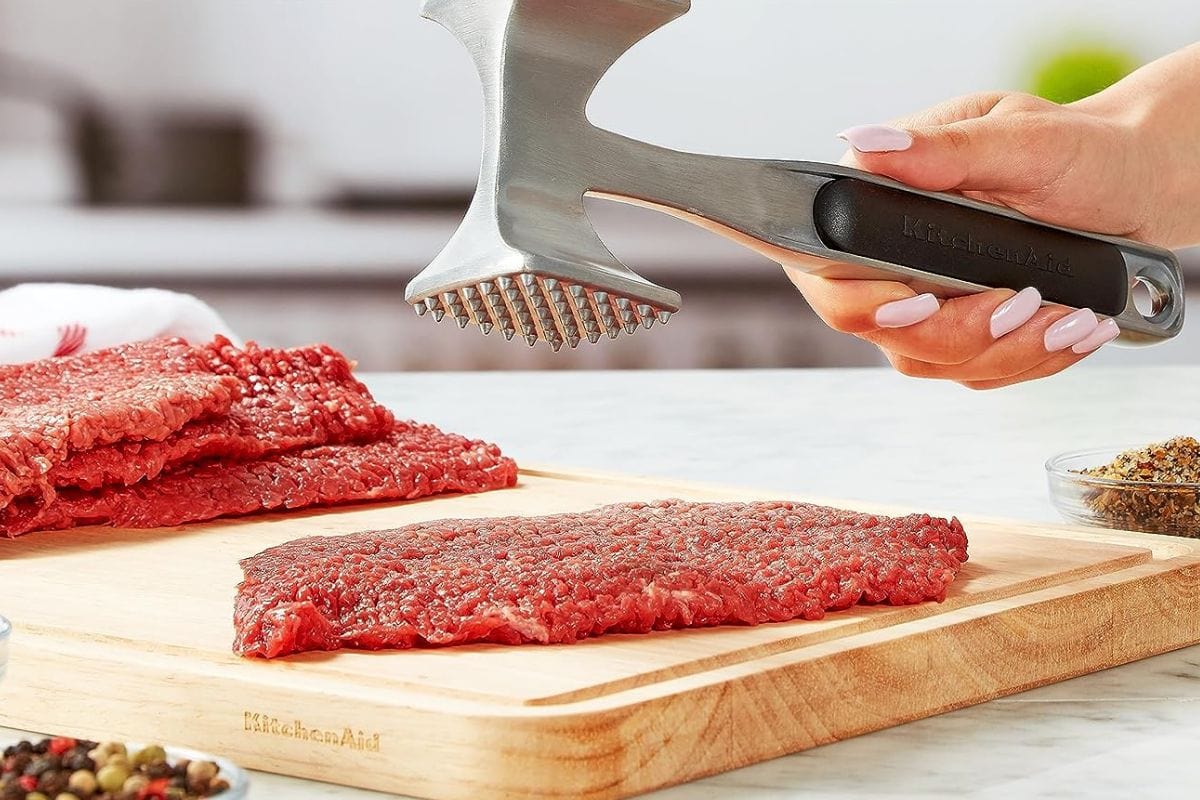
For recipes like my light and yummy Air Fryer Chicken Milanese, you have to pound the chicken into a thin, even layer, and a mallet tenderizer like this one from KitchenAid is perfect for the job. This popular meat tenderizer is made from lightweight cast aluminum and looks like a small hammer. One side of its head is flat for pounding out meat, and the other side has small spikes for tenderizing.
I love that this tool is comfortable to hold, and unlike bladed tenderizers, it can also be used for other cooking tasks, such as cracking nuts, crushing ice, or smashing peppercorns. It’s a versatile pick that’s impressively inexpensive, too! Just keep in mind that it can’t go in the dishwasher, so you’ll need to carefully wash it by hand after using it on any kind of raw meat.
The Specs
The Pros
The Cons
What Others are Saying:
The KitchenAid Gourmet Meat Tenderizer has a 4.8-star rating from more than 21,000 reviews on Amazon.
Buy the KitchenAid Gourmet Meat Tenderizer:

This small mallet-style tenderizer is a great choice if you’re shopping on a budget or only need a meat tenderizer for occasional use. It has a dual-sided head with one flat edge and one spiky edge, and while the head is fairly small, it has a steel core that helps you generate more power. The mallet’s handle is wrapped in a soft, non-slip material that’s easy to hold, even if your hands are wet, and the tenderizer is dishwasher-safe for hands-free sanitizing after you’re done cooking.
However, its spikes are fairly small, so it’s not necessarily the best tool if you’re prepping meat for marinade or working with an extra-thick cut.
The Specs
The Pros
The Cons
What Others are Saying:
The OXO Good Grips Meat Tenderizer has a 4.8 star rating from more than 5,000 Amazon reviews. Plus, Food & Wine gave it the title of best meat pounder and Serious Eats named it the best mallet-style meat pounder.
Buy the OXO Good Grips Meat Tenderizer:
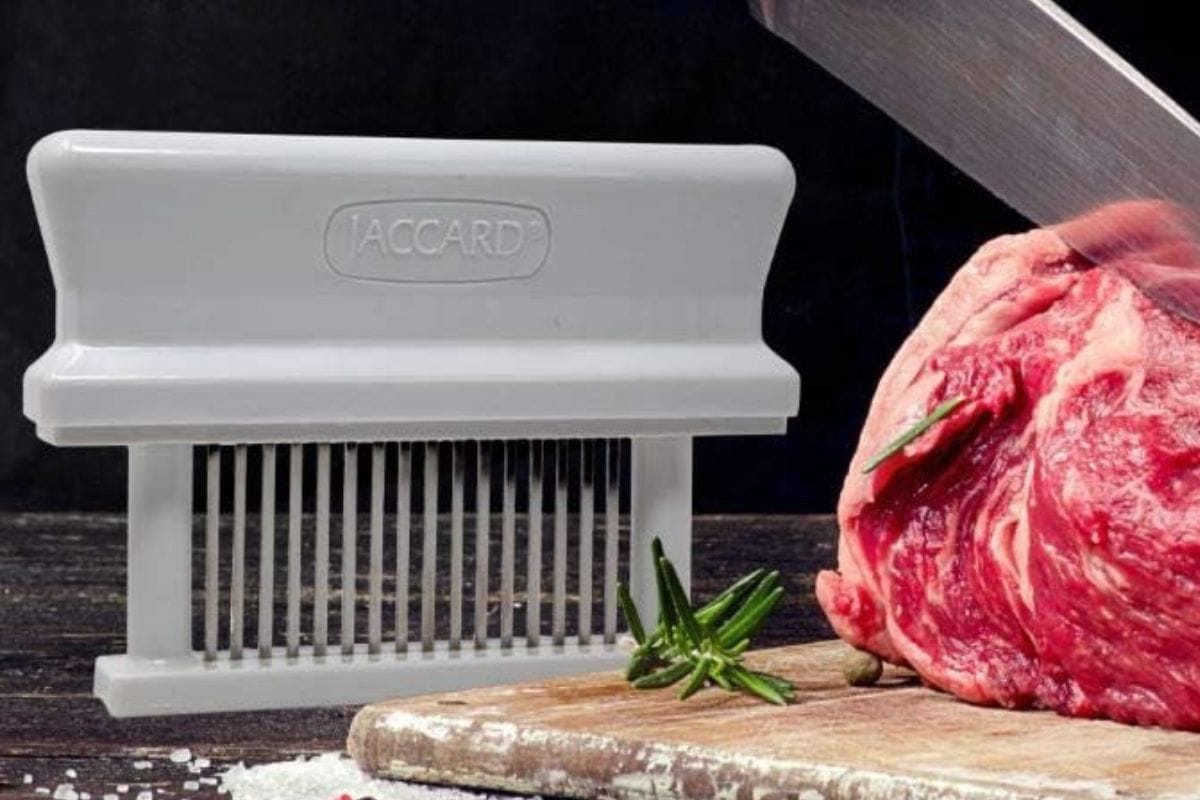
When you’re making a recipe like my Garlic-Lime Marinated Pork Chops, a bladed tenderizer like this one will poke holes in the meat, allowing the marinade to soak in better. This Jaccard Tenderizer has 48 sharp, double-edged blades that get deep into any cut of meat, and it can be washed on the top rack of the dishwasher, helping to sanitize the blades after use.
This tenderizer comes with a protective cover for storage, but due to its bladed design, is better suited for red meat than it is for pounding out thick chicken breasts.
The Specs
The Pros
The Cons
What Others are Saying:
The Jaccard Meat Tenderizer has a 4.8-star rating from more than 7,000 Amazon reviews. It was also named the best bladed meat tenderizer by The Spruce Eats.
Buy the Jaccard 48-Blade Meat Tenderizer:
If you frequently cook big batches of food this large unit will help you quickly tenderize large quantities of meat. It has 31 blades, and all you have to do is feed the meat into the top and turn the crank handle—no manual pounding required. The Weston Tenderizer can also be used to make cube steak, but it is quite large (and pricey), so it might be oversized for everyday household use. The Weston Meat Tenderizer and Cuber is available at Amazon for $129.99.
This is another popular mallet-style meat tenderizer that you may want to consider for your kitchen. It has a dual-sided head for pounding and tenderizing, as well as a non-slip handle that comes in several colors. The mallet can be cleaned in the dishwasher, but it’s fairly lightweight, so you do have to put in a little extra elbow grease when using it. The Gorilla Grips Heavy Duty Meat Tenderizer is available at Amazon for $13.40.
Some cooking pros swear by the Norpro Grip-EZ Tenderizer, which has a unique short-handled design. Its round head is 3.5 inches in diameter, covering more area with each pound, and its tenderizing spikes are also longer than many mallets. You can also flip the head over for a flat pounding surface, but the handle design isn’t as ergonomic to use as other mallets. The Norpro Grip-EZ Tenderizer is available at Amazon for $26.58.
The Aliglow Meat Tenderizer is an inexpensive mallet with a classic double-sided head. While it is a popular product, it’s on the smaller side. Additionally, the tool must be hand-washed, so you’re probably better off putting your money toward one of the other options highlighted above. The Aliglow Meat Tenderizer is available at Amazon for $9.89.
This meat tenderizer from Williams Sonoma has the same design as the Norpro, with a short handle and reversible head. While the head has a 3-inch diameter for more coverage, the handle isn’t non-slip, and the tenderizer is fairly pricey compared to most other options. The Williams Sonoma Reversible Meat Tenderizer is available at Williams Sonoma for $42.95.
I’m Gina Homolka, the author and recipe developer here at Skinnytaste. My goal is to help you create lightened-up versions of your family’s favorite recipes without compromising flavor, and I love to cook with seasonal, whole foods, including all sorts of meat. On the site, you’ll find lots of recipes that use beef, pork, and chicken—as well as other protein sources—and a meat tenderizer will help take your cooking to the next level.
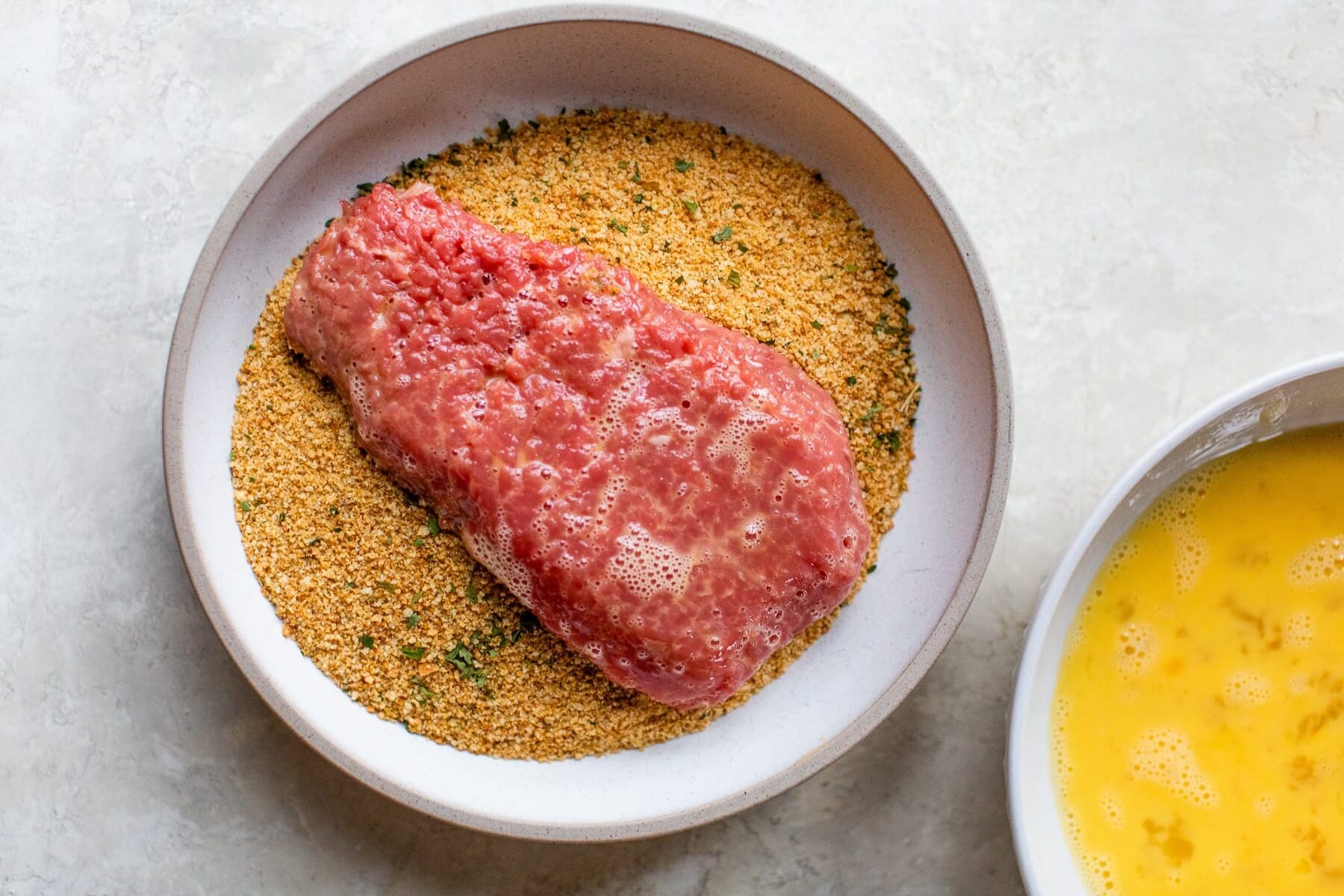
I’ve personally used several of the meat tenderizers included on this list, and the OXO Good Grips Bladed Meat Tenderizer is one of my favorite grilling tools. For the products I haven’t been able to use myself, I relied on ratings from hundreds of home chefs, as well as reviews and testing from other cooking professionals at trusted publications around the internet.
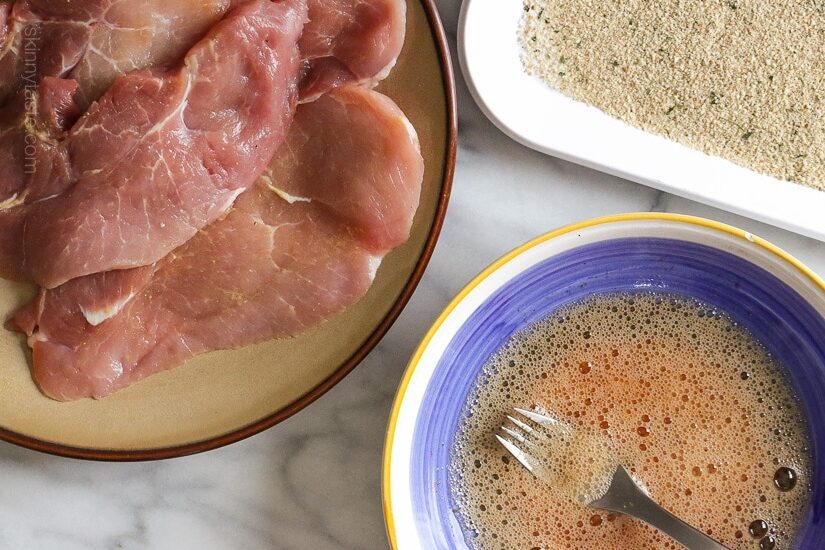
There are a few different factors you’ll want to take into account as you’re shopping for a meat tenderizer, including the following considerations:
Style: There are two main styles of meat tenderizers that you’ll find today: mallets and bladed tenderizes. Mallets are generally cheaper, and they typically have a two-sided design that makes them effective for both pounding and tenderizing meat. Bladed models, on the other hand, have sharp blades that poke holes in the meat, which is great for marinades and particularly tough cuts of protein.
Size: Meat tenderizers come in a variety of different sizes, from small mallets that you can store in your utensil drawer to freestanding crank-operated models. If you’re only cooking for one or two people, a small tenderizer will likely be fine, but anyone who cooks in large batches may want a larger version to speed up the process.
Cleaning: Because tenderizers are used directly on raw meat, it’s important that they’re thoroughly cleaned between each use to remove any potentially harmful bacteria. For this reason, you’ll likely want to look for a product that’s dishwasher safe.
To tenderize meat, start by laying it on a stable work surface. If you’re using a mallet, you can cover the meat with a piece of plastic wrap to minimize the mess, then use the spiked side of the mallet to hit the meat. Start at the center and work your way toward the edges, and don’t pound so hard that you flatten the meat. If you’re using a bladed tenderizer, skip the plastic wrap and work directly on the meat’s surface, pressing the blades down into the meat to create evenly spaced holes.
For recipes like Beef Stew, many people like to use inexpensive stew meat, which can sometimes be tough and chewy. However, you don’t need to use a tenderizer to get the stew meat nicely tender. Instead, the key is to cook your stew for several hours on low heat, which will break down the collagen proteins, giving it that melt-in-your-mouth texture.
When you have a tough piece of meat, such as chuck steak or brisket, the meat itself has a lot of college protein in it—that’s what makes it tough and chewy. When you tenderize these types of meat, whether with a mallet or blades, it helps to break down some of those proteins before cooking. This makes the meat more tender, easier to cut, and easier to chew.
There are a number of different ways to tenderize meat—including a few options that don’t involve pounding it with a hammer. Brining meat in salt is a surprisingly effective way to make it more tender, and it can also help improve the flavor of the meat, as well. It’s actually a key step in my Air Fryer Chicken Sandwich recipe! Vinegar can also be used for tenderizing, thanks to its acidic nature, but you don’t want to use too much or your meat may take on the taste.
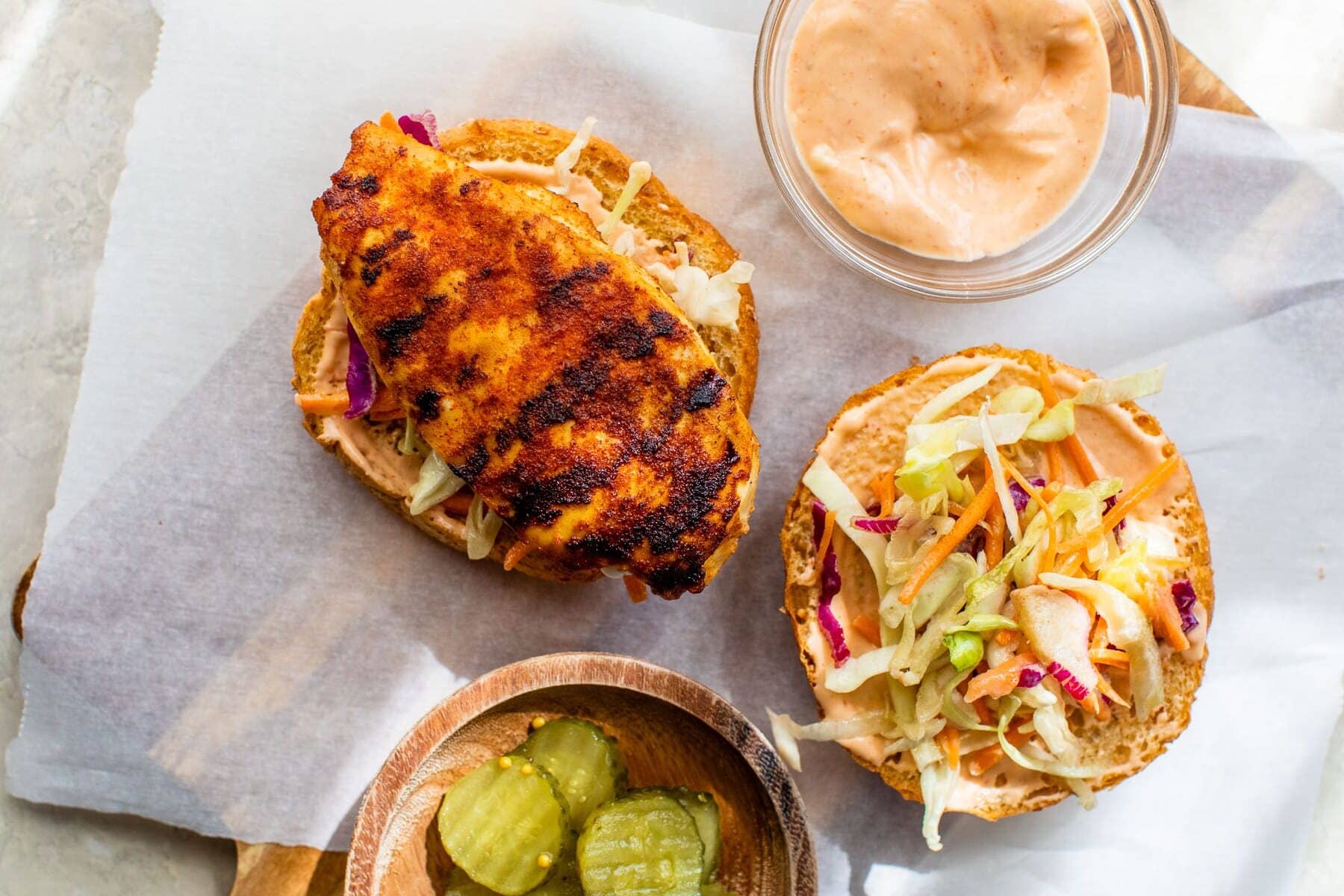
Once you invest in a meat tenderizer, you might be surprised at how often you reach for it while cooking. I pull mine out almost every time I cook a cut of meat, whether I’m grilling steaks during the summer or pounding out chicken for a tasty schnitzel. Here are a few of my favorite recipes where a meat tenderizer will come in handy:
Prices were accurate at time of publication.